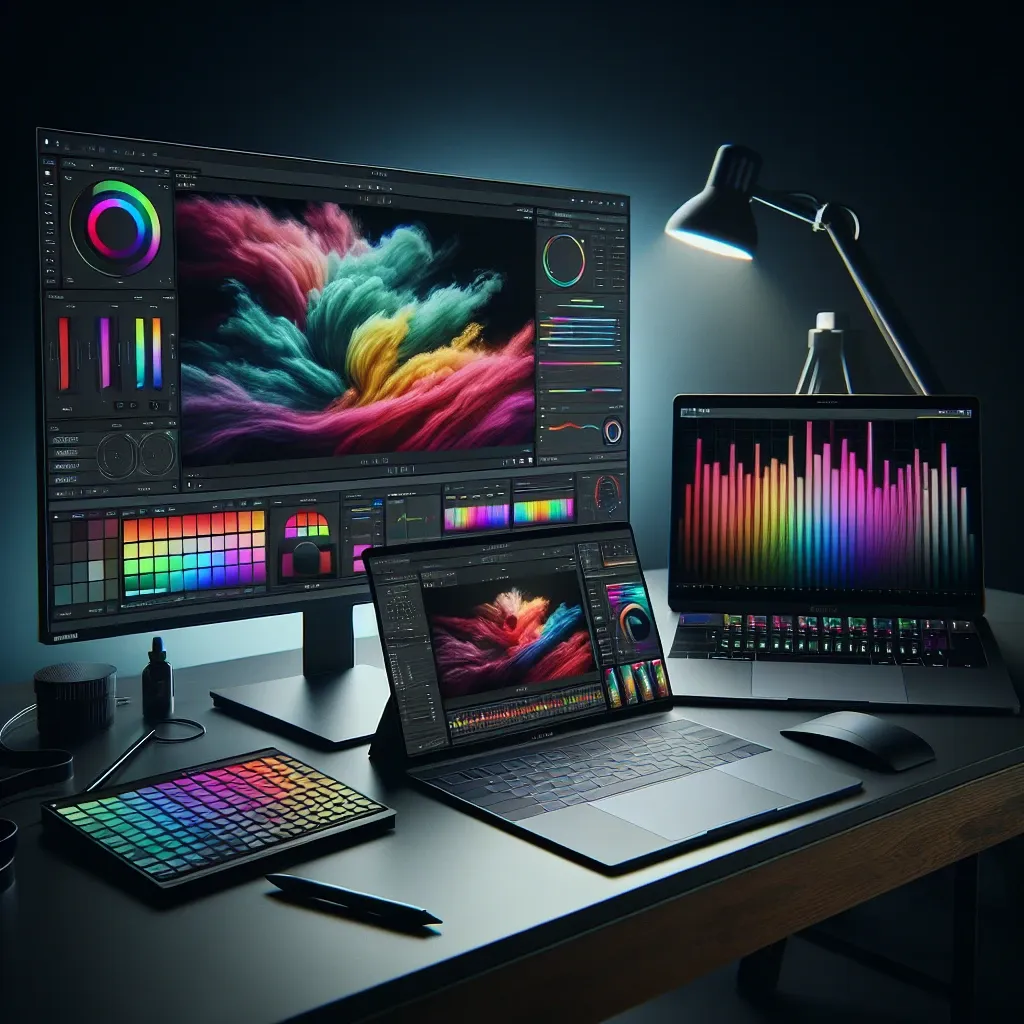The world of professional color grading and HDR (High Dynamic Range) work requires a powerful and reliable laptop that can handle the intensive demands of editing high-resolution videos and images. This article delves into the key features and specifications that make a laptop ideal for these tasks.
| Feature | Importance | Description |
|---|---|---|
| High-Resolution Display | Essential | Accurate color representation and clarity are critical for color grading. |
| Color Accuracy (sRGB, Adobe RGB, DCI-P3) | Critical | Enables precise color corrections and enhancements. |
| Powerful GPU | Vital | Handles complex rendering and processing tasks efficiently. |
| Fast Processor (CPU) | High | Supports smooth editing and rendering operations. |
| Ample RAM | Important | Ensures smooth multitasking and handling of large files. |
| Storage (SSD vs. HDD) | Significant | Fast read/write speeds reduce loading times of large projects. |
| Portability | Moderate | Allows work on-the-go. |
| Connectivity Ports | Necessary | Supports peripherals and external devices. |
| Battery Life | Considerable | Important for extended work sessions away from power outlets. |
1. High-Resolution Display
A high-resolution display is crucial for professional color grading and HDR work as it ensures that every detail of your image or video is visible. A resolution of at least 4K (3840 x 2160) is recommended for optimum clarity.
Benefits of High-Resolution Displays
- Enhanced Clarity: Allows for precise editing and spotting of minor imperfections.
- Better Detailing: Facilitates more accurate color corrections and adjustments.
2. Color Accuracy: sRGB, Adobe RGB, DCI-P3
Color accuracy is paramount in the realm of professional color grading. A laptop with a display that covers a wide color gamut, such as sRGB, Adobe RGB, and DCI-P3, is essential for accurate color representation.
Explanation of Color Gamut
- sRGB: Standard RGB color space for consistent color display.
- Adobe RGB: Widens the color range for more vibrant colors.
- DCI-P3: Industry standard for digital cinema and HDR content.
3. Powerful GPU
A robust GPU (Graphics Processing Unit) is necessary to handle the intensive rendering tasks associated with color grading and HDR work. GPUs like NVIDIA’s Quadro or AMD’s Radeon Pro are designed for these professional workloads.
Key Benefits of a Powerful GPU
- Improved Rendering: Speeds up processing times for large projects.
- Enhanced Performance: Ensures smooth playback of high-resolution content.
4. Fast Processor (CPU)
The CPU (Central Processing Unit) plays a significant role in the performance of your laptop. A multi-core processor, such as Intel’s i7 or i9, or AMD’s Ryzen 7 or 9, is recommended for efficient multitasking and seamless performance.
Importance of a Fast CPU
- Efficient Multitasking: Handles multiple applications and processes simultaneously.
- Smooth Operation: Ensures fast and responsive performance during editing tasks.
5. Ample RAM
Having sufficient RAM (Random Access Memory) is critical for managing large files and complex projects. A minimum of 16GB is recommended, though 32GB or higher is ideal for professional color grading and HDR work.
Advantages of Ample RAM
- Seamless Multitasking: Allows you to work on multiple projects and applications without lag.
- Improved Performance: Ensures smooth handling of high-resolution files.
6. Storage: SSD vs. HDD
For professional color grading and HDR work, solid-state drives (SSDs) are preferred over hard disk drives (HDDs). SSDs offer faster read/write speeds, reducing loading times and improving overall performance.
Benefits of SSD Storage
- Quick Access: Faster retrieval of files and projects.
- Enhanced Performance: Reduces latency and improves workflow efficiency.
7. Portability
While desktops are traditionally favored for professional work, laptops offer the advantage of portability, allowing professionals to work from different locations. Lightweight and compact designs are preferred without compromising on performance.
Portability Considerations
- Work Flexibility: Enables work on-the-go, ideal for frequent travelers.
- Space Efficiency: Saves workspace and offers convenience.
8. Connectivity Ports
A laptop with multiple connectivity ports is essential for accommodating various peripherals and external devices. USB-C, Thunderbolt, HDMI, and SD card slots are some of the important ports to consider.
Essential Connectivity Ports
- USB-C/Thunderbolt: For high-speed data transfer and versatile connectivity.
- HDMI: Connects to external monitors for larger displays.
- SD Card Slot: Facilitates fast data transfer from cameras and other devices.
9. Battery Life
Battery life is a critical factor for professionals working for extended periods away from power sources. A laptop with a robust battery life ensures that you can work efficiently without frequent interruptions to recharge.
Importance of Long Battery Life
- Uninterrupted Work: Allows for long editing sessions without worrying about power availability.
- Increased Productivity: Minimizes downtime and maximizes workflow.
Conclusion
Choosing a laptop for professional color grading and HDR work involves considering several critical factors such as display quality, color accuracy, powerful GPU and CPU, ample RAM, and storage. Ensuring that your laptop meets these requirements will enable you to work efficiently and produce high-quality results in your color grading and HDR projects.

